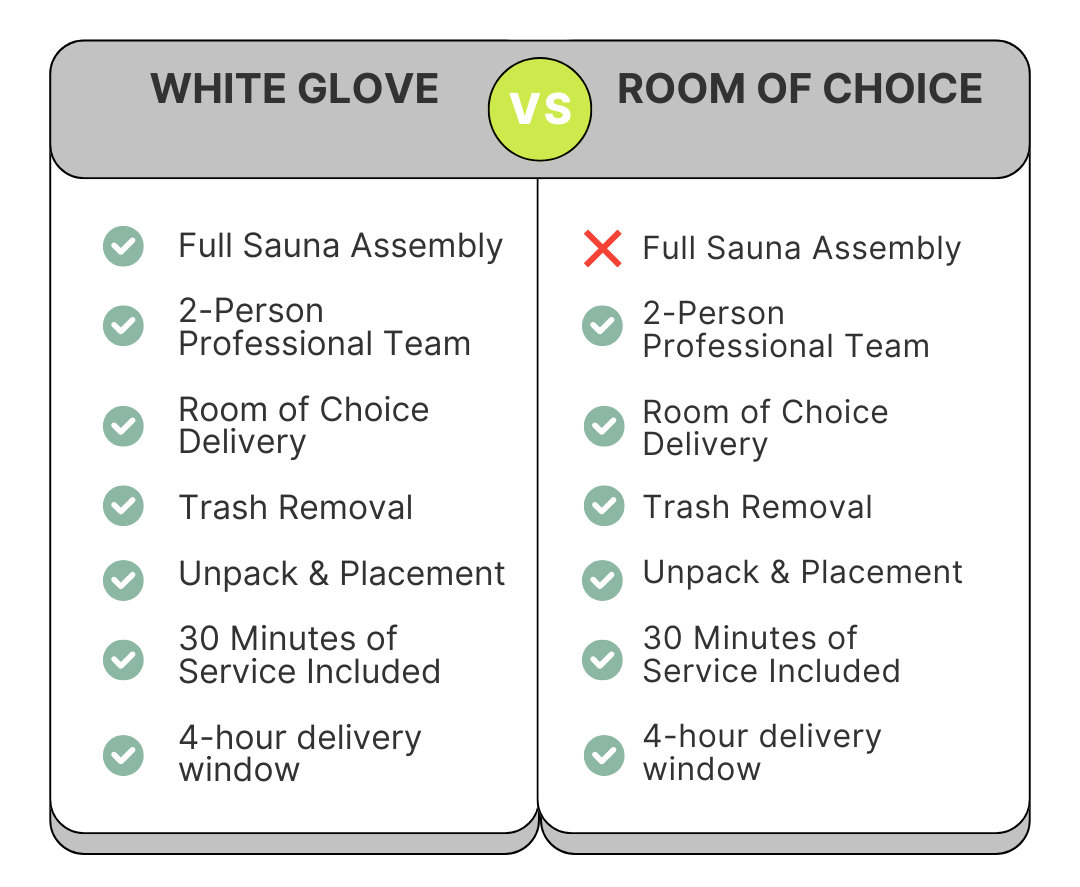Choose the Delivery Experience
From simple placement to full setup, we’ve got you covered.
Our Room of Choice Delivery ensures your Solara is safely carried into your home (including stairs and apartments), placed exactly where you want it, unpacked, and all trash removed —assembly not included.
For the ultimate hands-off experience, our White Glove Delivery includes everything in Room of Choice plus full professional assembly, so your sauna is ready to use right away. Both options are handled by our trained 2-person teams with a scheduled 4-hour appointment window and customer signature at delivery.















